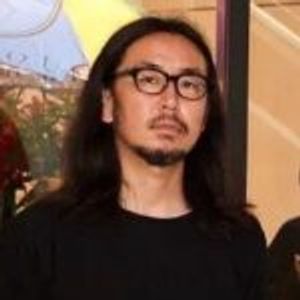Kensei Yabuno continues to express patterns such as spots and lines in black and white across various mediums, from drawings to three-dimensional works and textiles. The fictitious, alien-like creatures often used as motifs in his work elude any physical or gender categorization. Rather than seeking his viewers to understand his work, it feels as though he is just expecting both to coexist.
His creations are intuitive, detached from verbal or cerebral processes. While traversing diverse cultures, they resonate with the essence of a decadent 90s culture. He characterizes his work as “a culmination of everything I’ve believed in, from music and movies, U.S. toys, fashion, to DIY culture”. Currently showcased at the “Untitled II” exhibition, his drawings and 3D models construct a unique realm that seamlessly blends charcoal motifs and other indistinct colors together, provoking viewers and broadening their outlook. In this interview, we discussed everything from the roots of his creations to the inspiration behind his new work and approach to the ongoing exhibition.
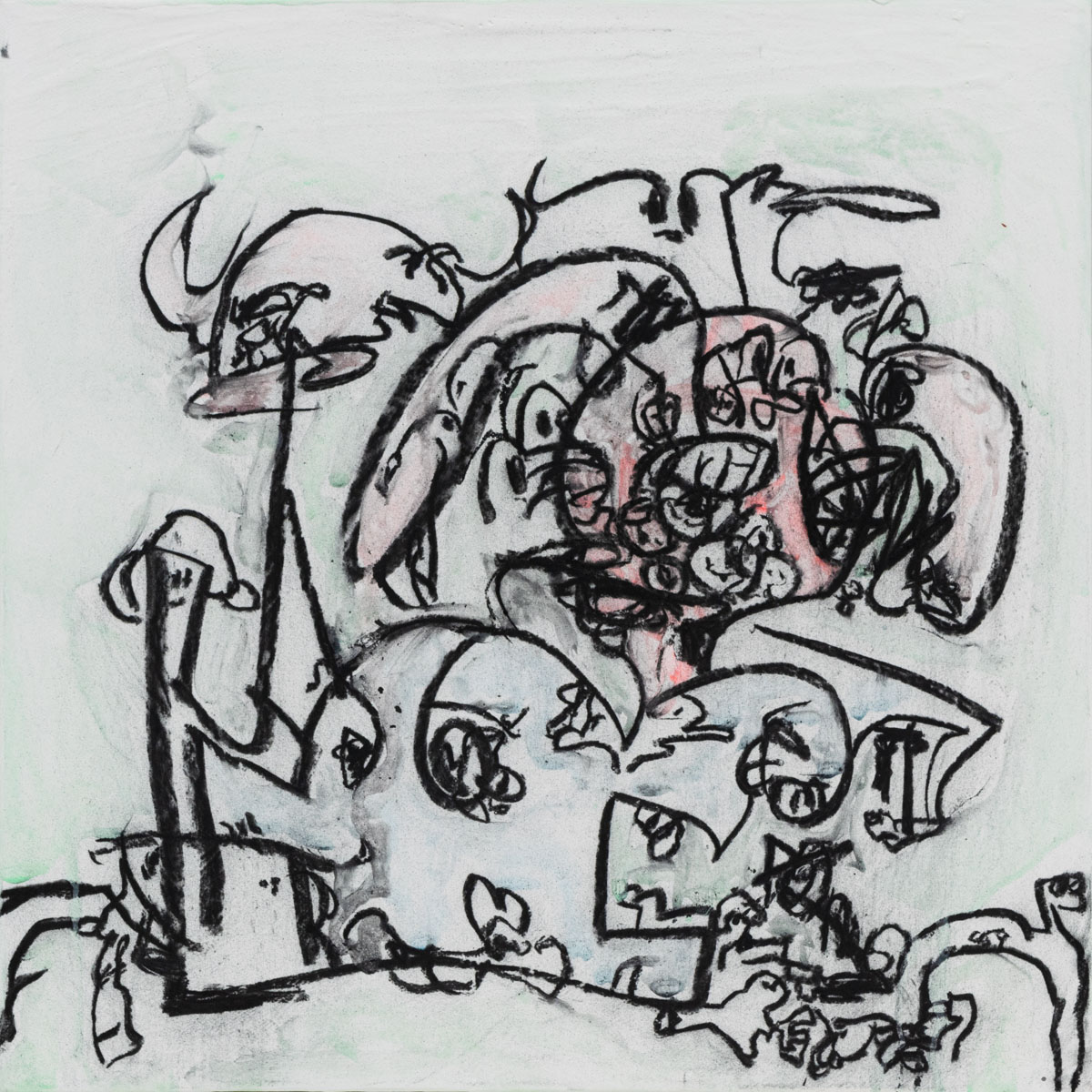
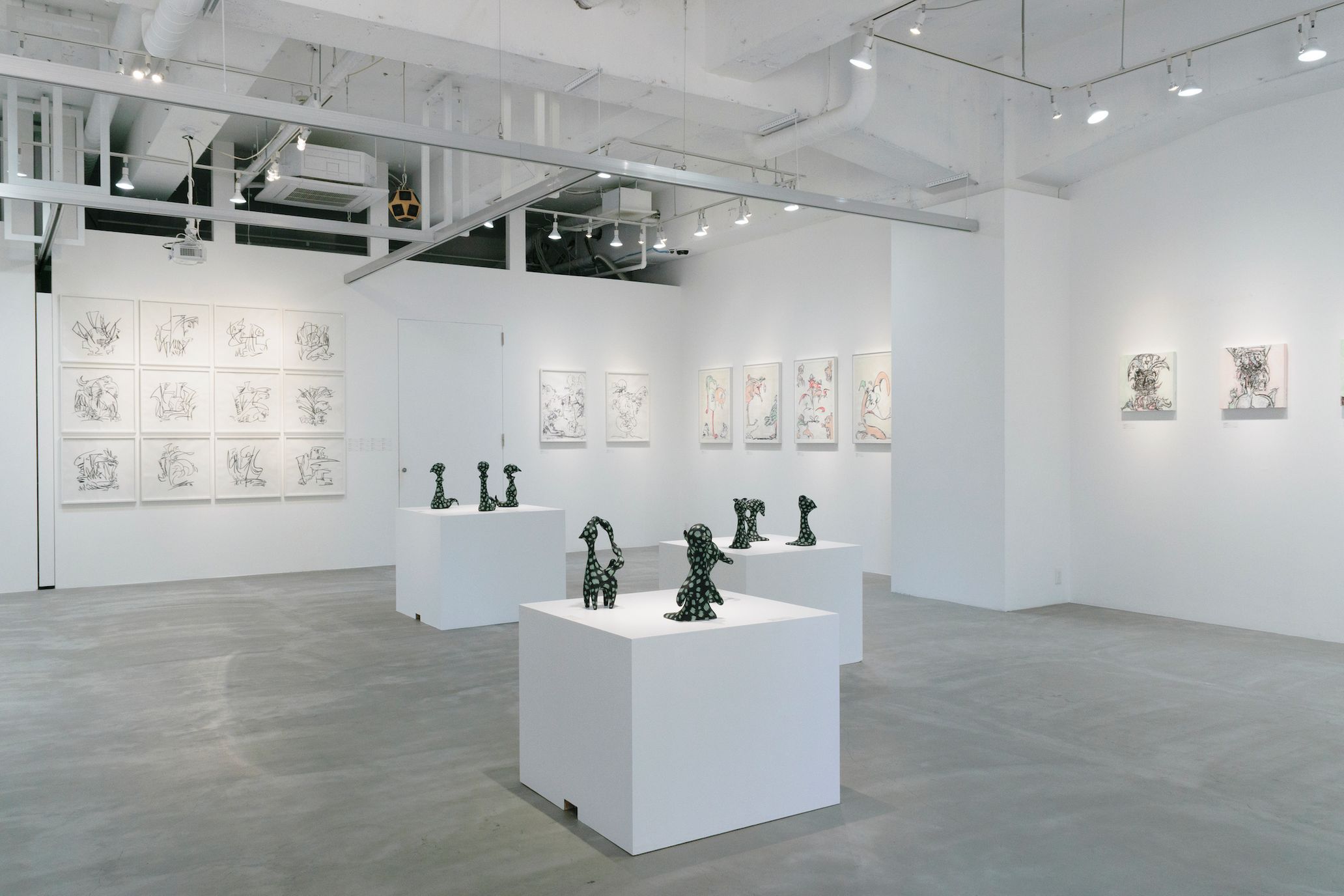
Kensei Yabuno
Yabuno, born in Hokkaido in 1975, pursued Fine Art at Camberwell College of Arts in the U.K. His paintings and 3D models have graced exhibitions at notable venues such as Iimart, THE LAST GALLERY, and Isetan Shinjuku. His work has gained international exposure through publications like Idea, vice, and DAZED & CONFUSED. Notably, his creations adorned the textile design for Comme Des Garçon’s 2011 spring/summer collection. Among his recent exhibitions are WHY YOU (2019/HYSTERIC GLAMOUR SHIBUYA) with Shigekazu Onuma and solo exhibition Untitled (2022/KOMIYAMA TOKYO G).
“There are constantly two opposing personas within me”
– Can you elaborate on how you developed your simple yet genre-defying style that incorporates alien-like motifs, blending design and animation to create a distinctive worldview?
Kensei Yabuno: I began drawing in kindergarten. There wasn’t a specific event that led me to pursue art; it was the only choice for a dropout like me.
The black and white “Alien” marked my debut at the CLASKA solo exhibition in 2009. It was also the first time I showcased my work as a 3D model, having only presented 2D graphics before that.
Working at Omocha Spiral in Harajuku immediately after moving to Tokyo at the age of eighteen proved to be a pivotal experience for me. My fascination and understanding of U.S. toys blossomed, seamlessly guiding me through the transition from 2D to 3D.
I’ve been passionate about extreme music, film, and fashion since my teenage years. Perhaps that distinctive eccentric sensibility is reflected in my work.
– What principles do you adhere to when it comes to creating art?
Yabuno: Before executing my vision into tangible form, I consistently create mental images, updating them regularly. But that process only exists in my head; there is no step between conceptualization and manifestation. What’s important to me is the mental preparation, the physical act of putting hands to work, and confronting the task at hand.
– Do you experience fluctuations in your creative process or personal challenges, separate from external opinions and changes?
Yabuno: Absolutely (laughs). I’m aware that I’m someone who constantly experiences highs and lows, regardless of age. There are times when I lack the motivation, when things aren’t unfolding as I’d like them to, or when I’m grappling with a hurdle.
As I mentioned in my artist statement, there are two opposing personas that exist within me: one while asleep and one when awake. Jokingly, I refer to them as “Jekyll and Hyde”. The “Hyde” side harbors disdain and rejects everything. Maybe “Hyde” represents my true self (laughs).
“Expanding dimensions”: a new sensation
– Following last year’s “Untitled”, this marks your second exhibition. Can you highlight any new insights compared to the previous year?
Yabuno: Reflecting on last year’s “Untitled”, “Untitled II” aligns more closely with what I envisioned as a child. Back then, I felt restricted to turning only right, and now I find myself able to turn left. Unanticipated realizations unfolded as I transformedd the abstract yet concrete images in my mind into tangible expressions. I want to cherish this sensation through the fifth installation.
– In this exhibition, a plant-like color scheme has been introduced alongside your distinctive black and white 3D model creations. The light gold background color in your charcoal drawing was quite striking. How do you perceive the role of color in your work?
Yabuno: The significance of the 3D model evolves when infused with a color, whether a skin tone or a bronze hue. Introducing colors is intriguing as it alters the visibility of the work for me. To be honest, I find black and white most appealing, but the entire visual dynamic shifts with the addition of even a single color. This gradual broadening of perspectives may be the reason why I initially developed an interest in this artistic realm.
– How does the integration of seemingly contrasting elements hold significance for your present and future selves?
Yabuno: This may sound redundant, but what unfolds in dreams and what occurs in reality both happen to the same individual. The interplay between right and left, the coexistence of reality and dream, the difference between steady movement and a dynamic, direct one – all of these aspects contribute to the amalgamation of seemingly disparate elements. Merging two different components is akin to bridging the gaps on both sides. By incorporating previously unseen elements into your cultivated worldview, you can draw closer to your ideal. The sensation of expanding dimensions was a new revelation for me.
Yet, what I truly hold as a belief are the words of graphic designer Masayoshi Nakajo: “Masterpieces are coincidences”.
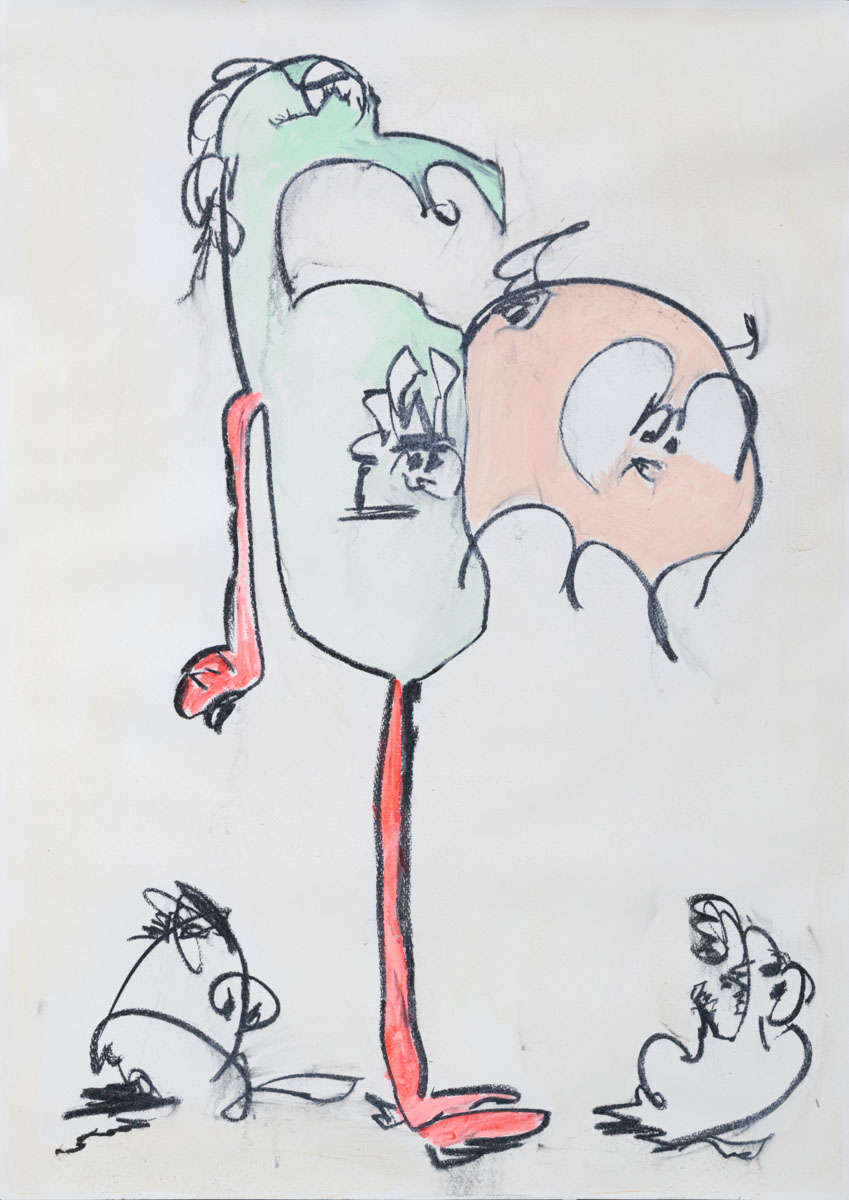
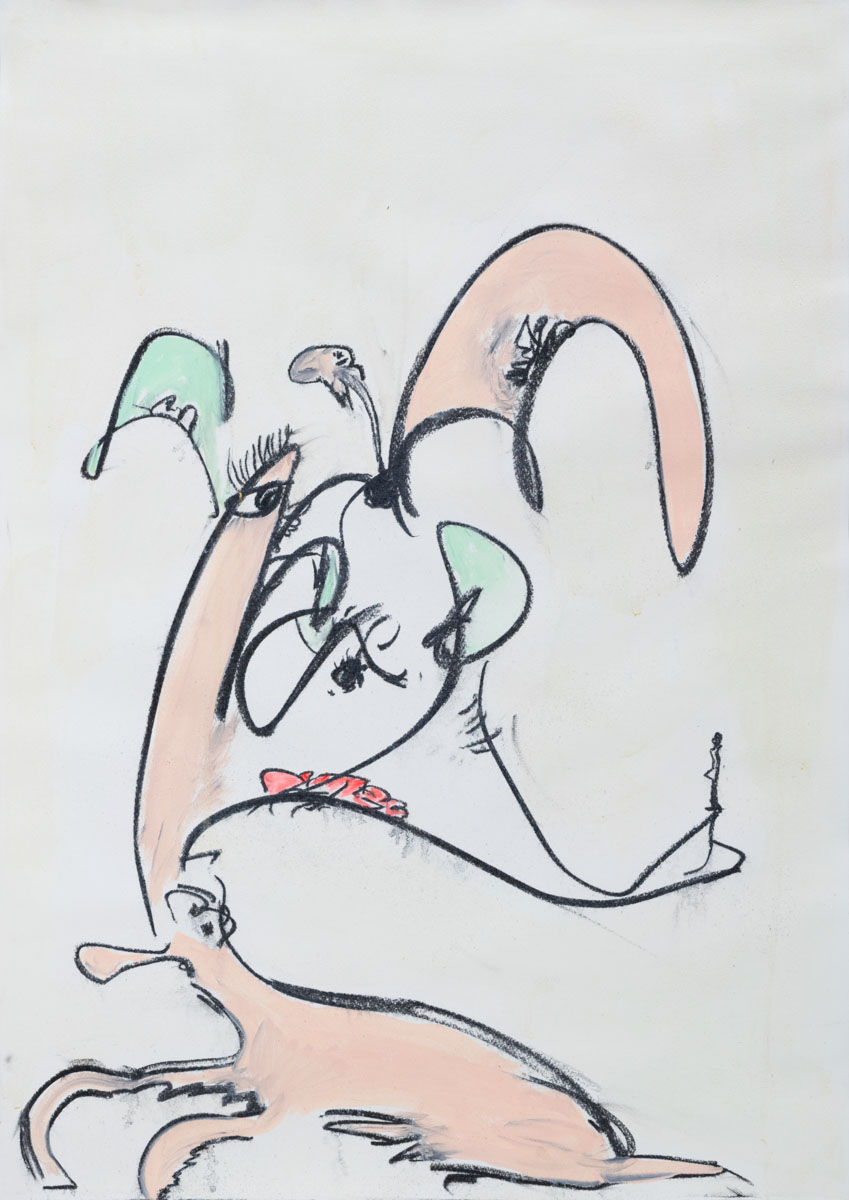
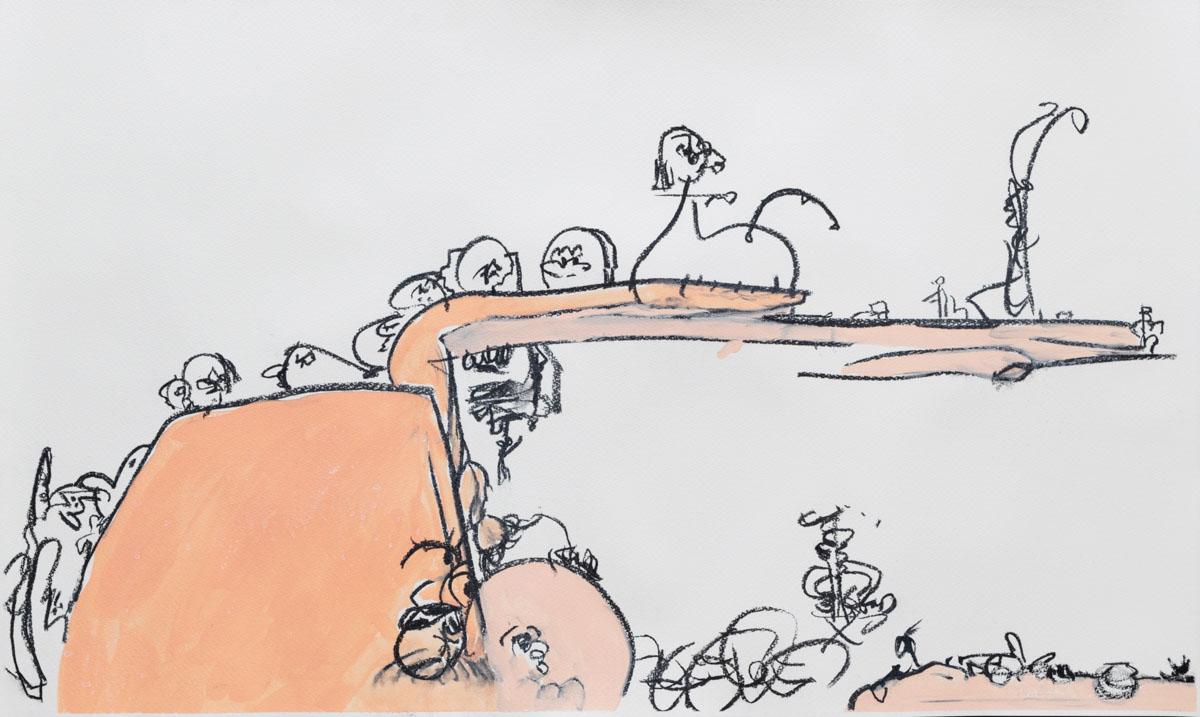
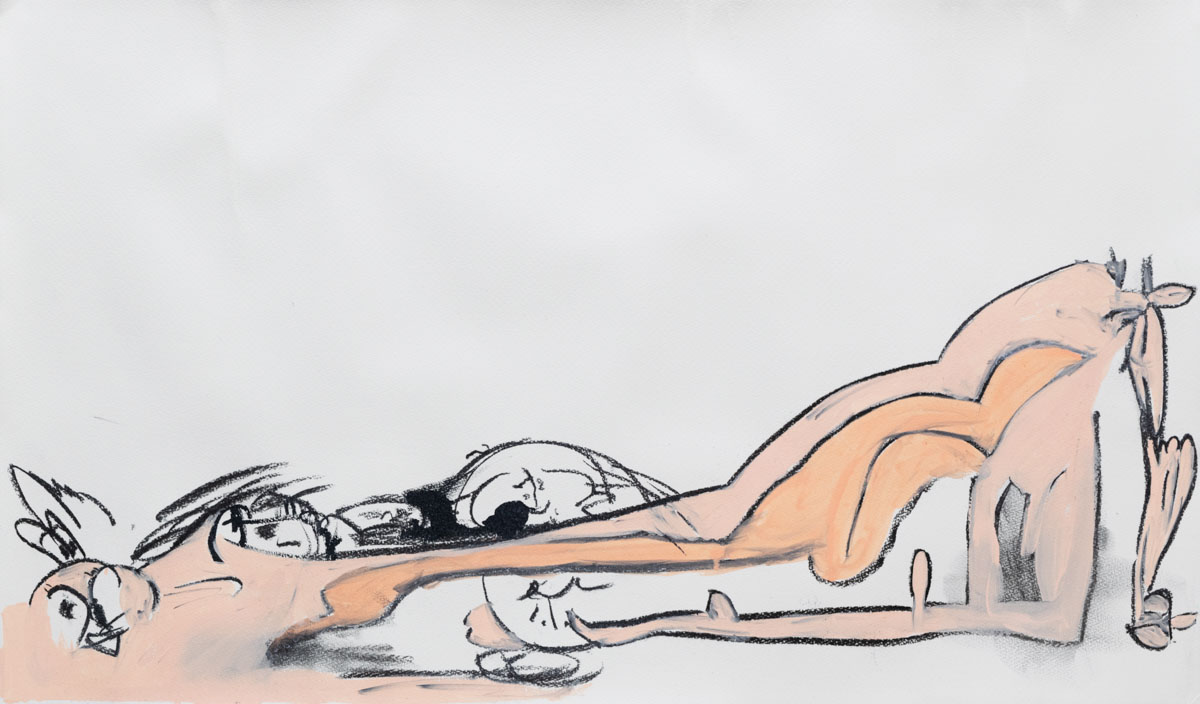

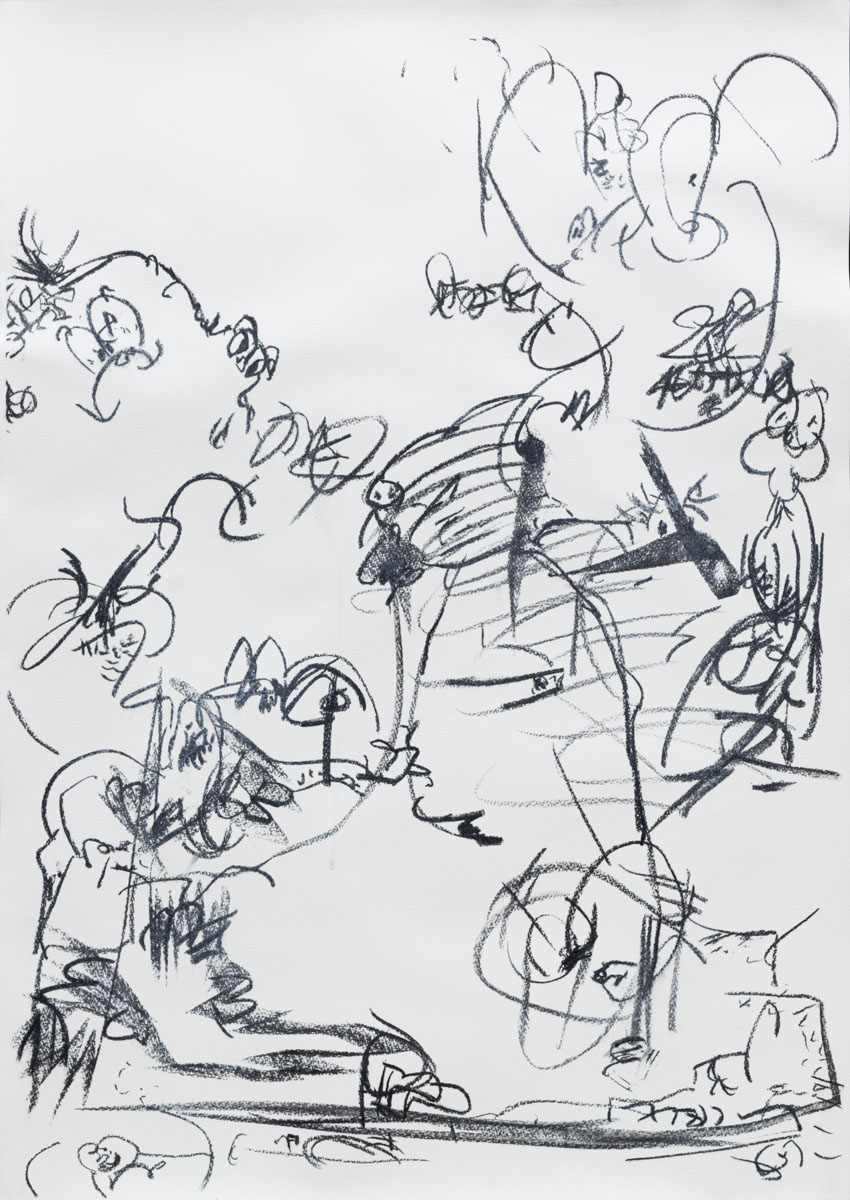
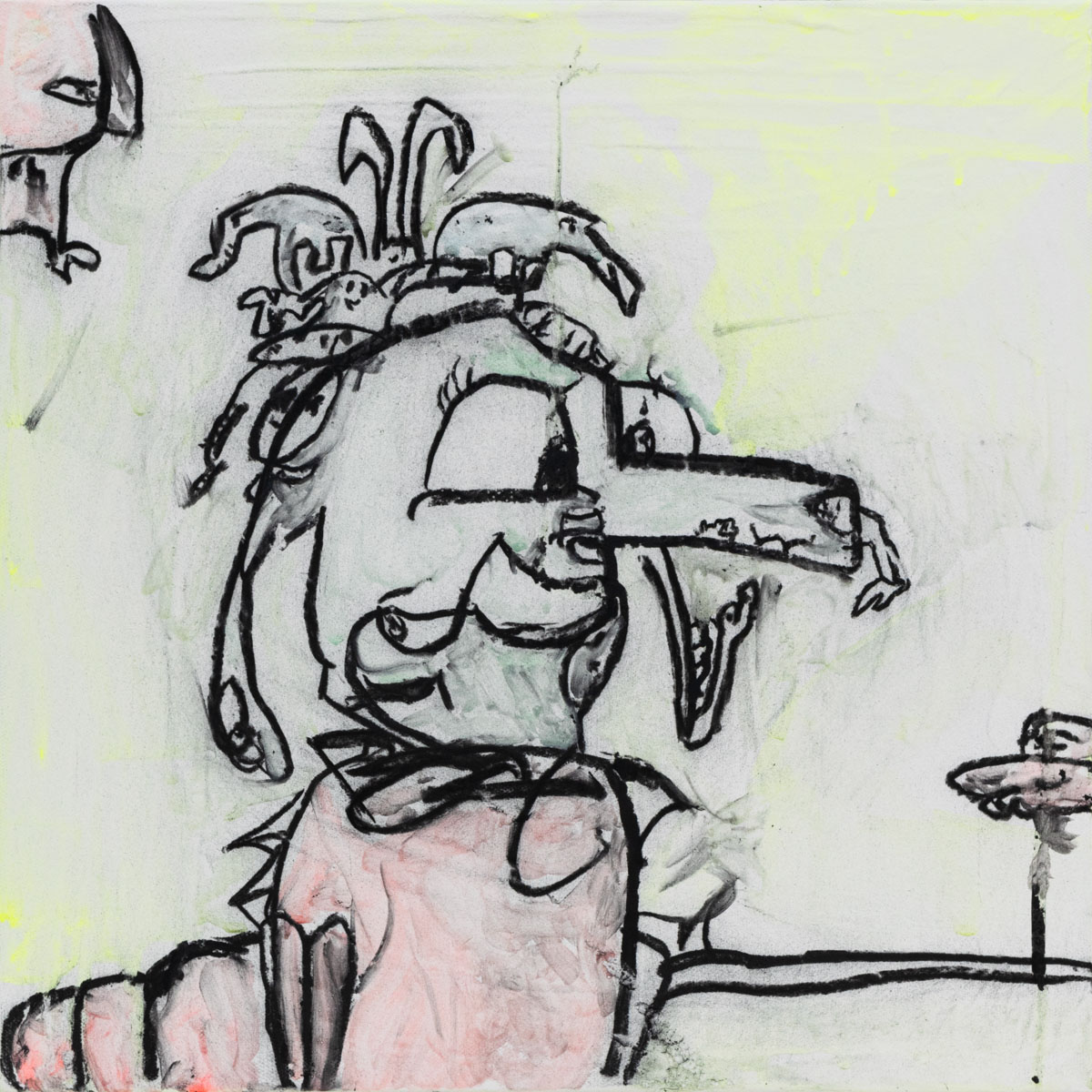
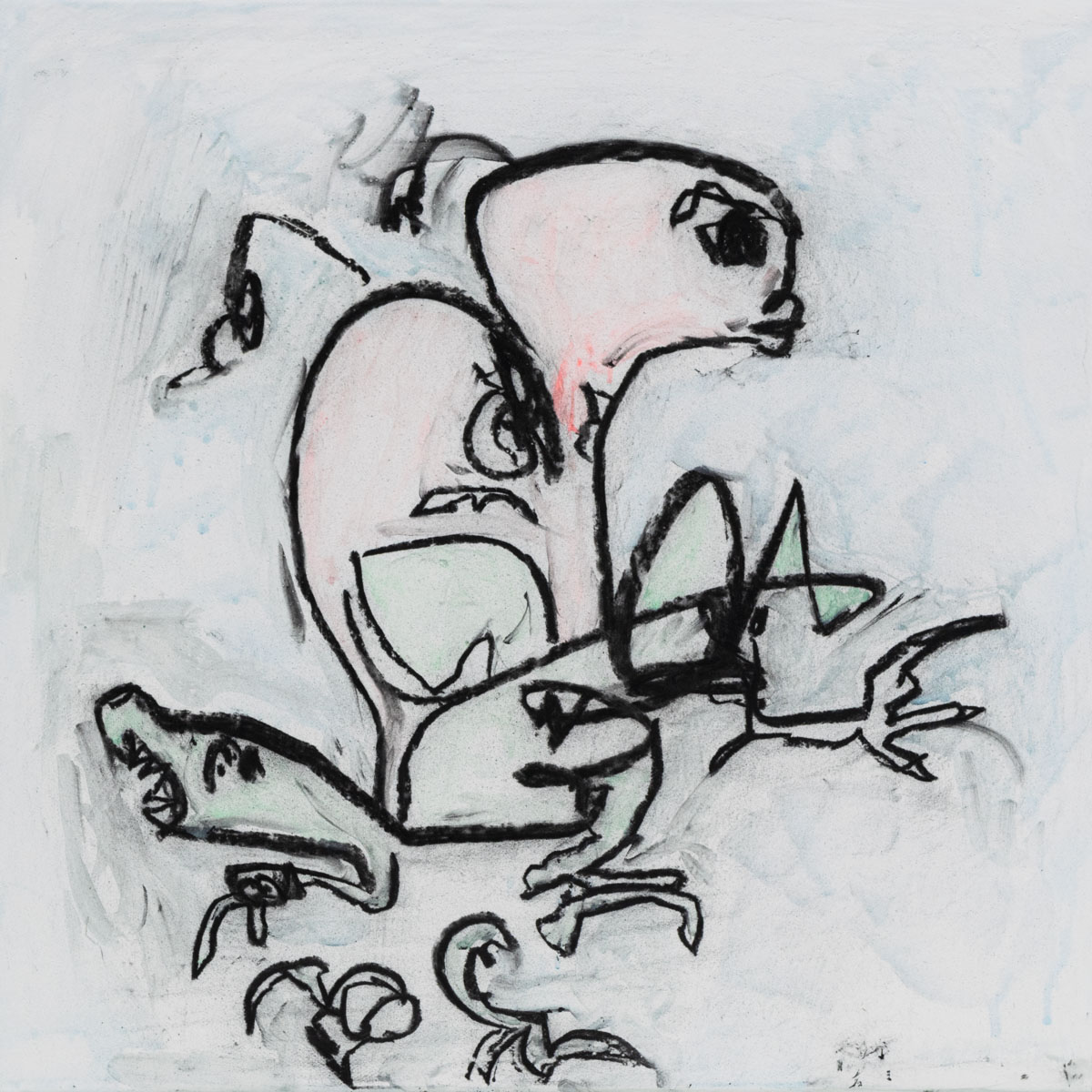



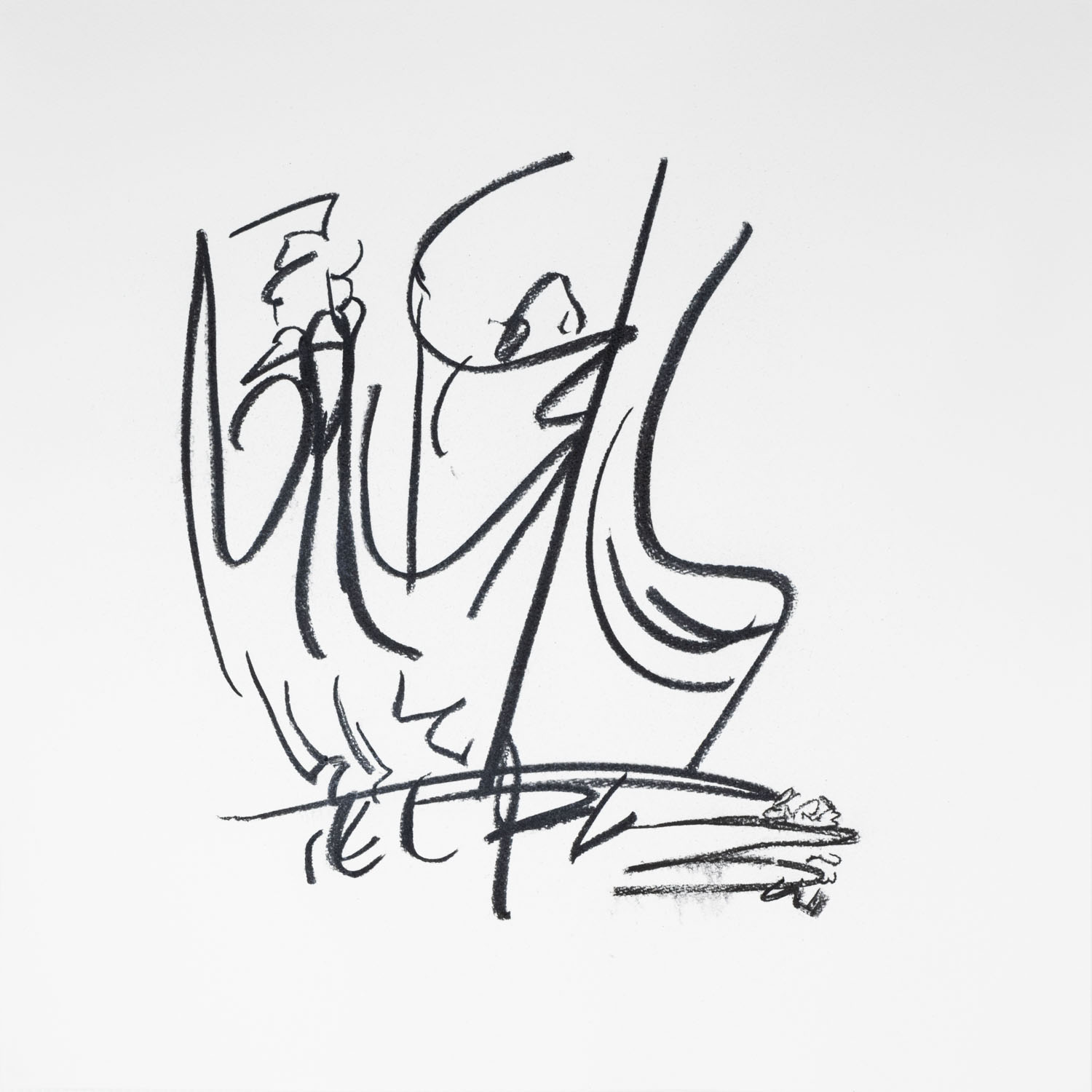
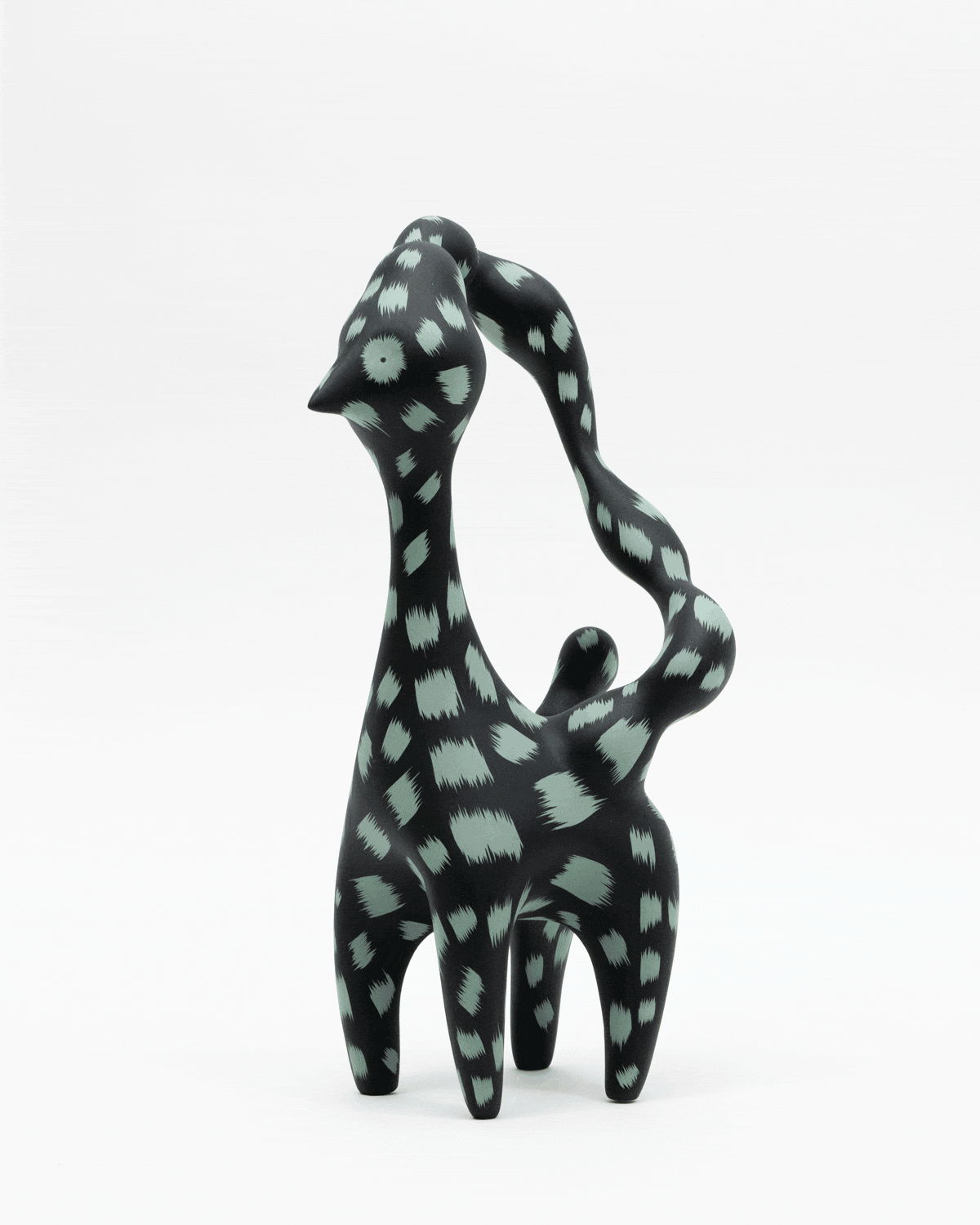
Trsanslation Mimiko Goldstein

